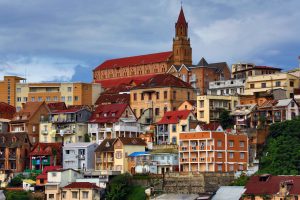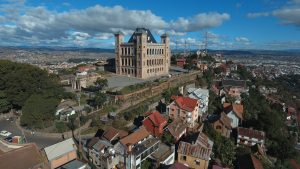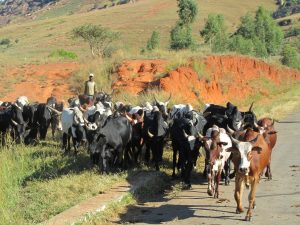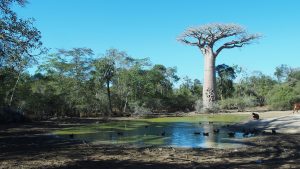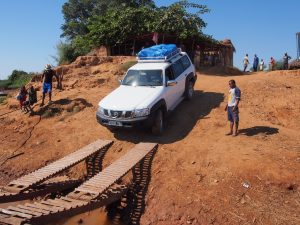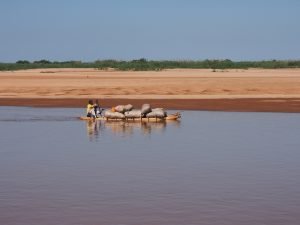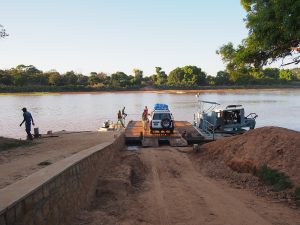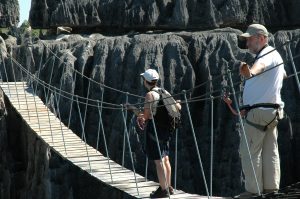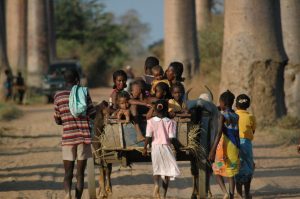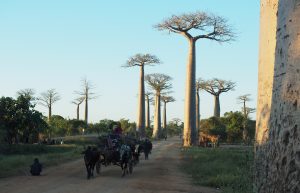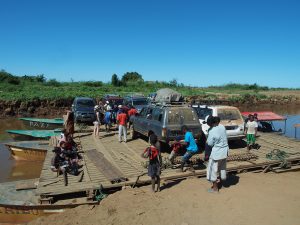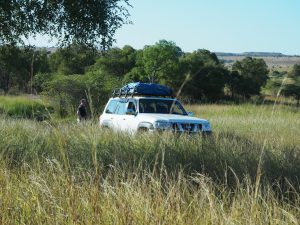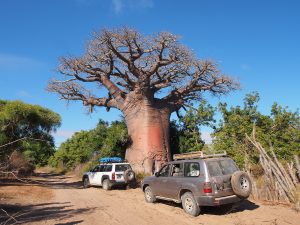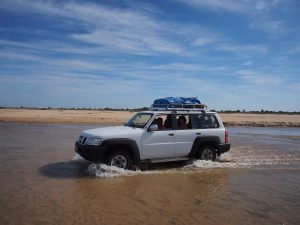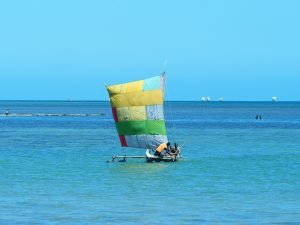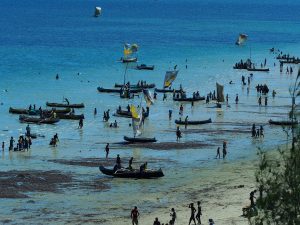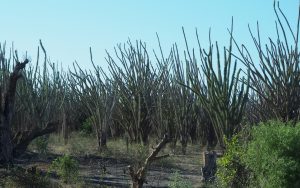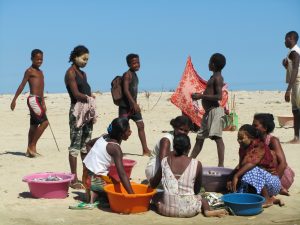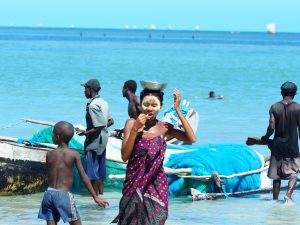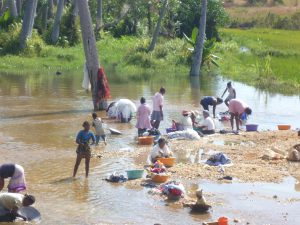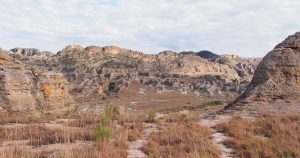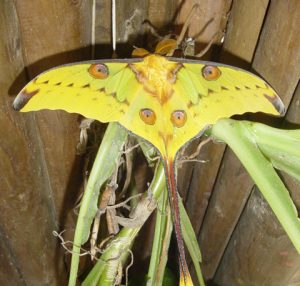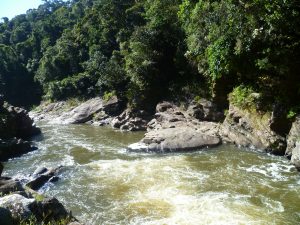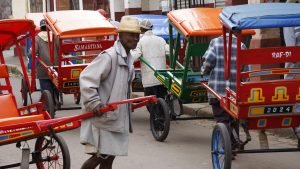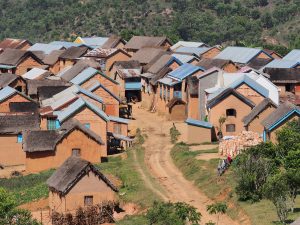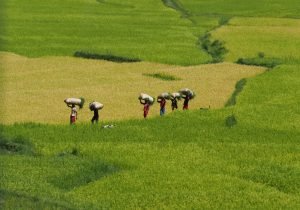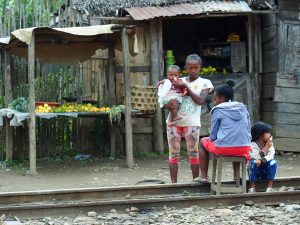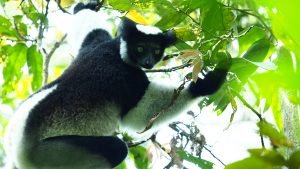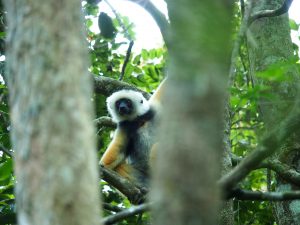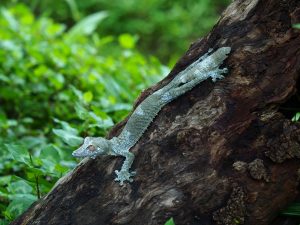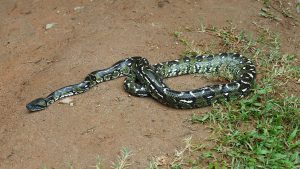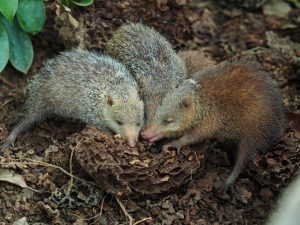by franz
This tour loops through west, south, central and east Madagascar. In order to do a loop it is necessary to leave asphalt roads and proceed off the beaten track for a while, thus the start is a bit more adventurous, bumpy, dusty tracks, river crossings by local ferry or fording. Highlights of the West are : Baobab Alley, Kirindy Forest, Tsingy de Bemaraha National Park, Morondava on the west coast. Two days of track-driving first through a savannah with widely spaced villages, then following the southwest coast with its dunes and fisherman villages leads to Ifaty, on a 120 km long lagoon protected by a barrier reef. Highlights : omnypresent baobabs, friendly authentic people, sanddunes, Vezo villages, Ifaty and its lagoon. From there, back on the asphalt, the National 7 road leads back to Antananarivo in 5 days, first crossing the Horombe savanna, before climbing back to the Central Highlands. Highlights are Isalo National Park, Anja village park, Ranomafana National Park. The last part leads to Andasibe before returning to Tana. Highlights / Andasibe-Mantadia National Park, Lemur Island, Peyrieras Reserve.
DAILY PROGRAM
DAY 1: Sunday: Arrival TANA
Meet and greet at the airport, then transfer to ICHOTEL where we spend our night on B&B
DAY 2: Monday: TANA- MIANDRIVAZO: 310Km – 6 hours with stops
Enjoy a fresh breakfast at hotel. Then, ICTours reps will meet you with the driver for a briefing of the whole tours. Ready, you’ll take the National 7 and drive southward. Our first direction is to Antsirabe that we reach within 3 hours, we cross the highland landscape with its beautiful terraced rice-fields along the hill, Arrival in Antsirabe by noon. Founded by Norwegian in 1856, it is an elegant city, which really feels and looks like European city. Dotted with cool climate and thermal spring, it is one of the most attractive regions in Madagascar for its clement climate. Afternoon, we head on westwards to Miandrivazo, leaving the National 7 and drive the National 4. The landscape is gradually changing, leaving the highland behind and giving place to savannah, empty hills, valley, and big hole called “lavaka”, resulted from erosion. Also the climate is changing as we are now in the hottest city of the country. Arrival in Miandrivazo by the end of afternoon, we check in and overnight in PRINCESSE DU TSIRIBIHINA or similar on B&B
DAY 3: Tuesday: MIANDRIVAZO – KIRINDY: 310Km – 6 hours with stops
Breakfast at hotel, then departure for 4 hours’ drive to Morondava, then take the road to Kirindy, 60 km of track from Morondava. As we come close to Morondava, the landscape is now changing a bit, giving place to flat rice fields, decorated with baobabs. We need to arrive in Kirindy before 04.00pm, to be in time to spot the fossa. After check-in, we will have 1-hour hiking in “Kirindy Park” with a guide. Rich on wildlife and home to 8 species of day active lemurs, Kirindy is also home to “the Fossa” the only predator for lemurs and the “Giant Jumping Rat” and the world’s smallest primate as well as dozens of amphibian and reptile species (and no poisonous snakes). at around 6pm, we meet our guide again for a night walk to see night actival animals, night at RELAIS KIRINDY LODGE or similar on B&B
DAY 4: Wednesday: KIRINDY – BEKOPAKA :150Km – 5 hours with stops
The Kirindy boasts more than 60 species of birds, so early morning we have 2 hours hike to look for birds before we take our breakfast. Then around 9.00am, with a 4X4 car, 2 hours’ drive to Tsimafana through the Baobabs forest and the red soil of the west. We take a Ferry boat transfer to reach Belo. Then head on to Bekopaka for another 4 hours adventure in a dirt track. This drive brings us to Madagascar profound, the bush African side of the country with its dry and red soil. One can experience the real life of Malagasy people in the driest part of the country. Arrival in Bekopaka by end of the afternoon, check-in and overnight in Hotel OLYMPE DU BEMARAHA on B&B
DAY 5: Thursday: BEKOPAKA: TSINGY DE BEMARAHA NATIONAL PARK
Morning, after breakfast, 4 to 6 hours hikes to the “Big Tsingy”, a limestone mountain classified as an international heritage. This massif is spectacularly eroded into a chaos of karsts pinnacle which gives it a very strange form. Here nature seems to be in perfect harmony with this wild and sharp limestone mountain. The flora consists of a dry western deciduous forest, plants typical of these dry limestone areas, such as species of Aloe and baobab Andasonia, the red-flowered flamboyant tree Delonix regia which is so widely planted in the tropics. Madagascar’s sole native banana Musa perrieri also occurs. Regarding flora, we can see typical plants growing in the rocky area such pachypodium, orchids. Concerning the fauna we can see the stump-tailed chameleon Brookesia perarmata known from only a handful specimens, the bird list contains 53 species, seven species of lemurs including Decken’s sifaka Propithecus verreauxi deckeni. Night at the same hotel on BB.
DAY 6: Friday: BEKOPAKA – MORONDAVA: 210km – 8 hours with stops
Breakfast at hotel then drive back to Morondava, we stop in « ALLEE DES BAOBABS » for photo; this is the region of splendid Grandidier’s baobab, Andasonia grandidieri. Night in Hotel CHEZ MAGGIE or similar on B&B
DAY 7: Saturday: MORONDAVA – MANJA: 120 km – 6 hours with stops
After breakfast, we drive southwards to Manja via the road “ Mon ami”, a private road owned by Kanto Hotel where we overnight. We’ll drive across thorny bushes, savannah and typical western villages with small wooden huts. From time to time, we will meet a group of women going to or coming from the local market, bringing goods on their head, many children waving hands to the tourists driving along. We cross the big river of Kabatomena where the car has to drive through the river. Estimated arrival in Manja by the end of the afternoon. It used to be one of the main districts of the west during colonial time as the region is very fertile for corn, rice, beans. Until now we can see some colonial ruined buildings in the centre of Manja. Overnight in hotel KANTO on B&B (a very simple and basic hotel but with toilet and shower)
DAY 8: Sunday: MANJA – IFATY: 160 km – 8 hours with stops
After breakfast, we’ll continue our drive, we take another ferry and cross Mangoky River and reach the town of Bevoay, one of the most important cities where a big dam has just been built to water all the fertile plains, the rice and vegetables fields surrounding. From there we take the National road 11which leads us to Ifaty that we’ll reach by the end of afternoon. From there, we will see forest of different species baobabs, the “Za”, the “ Grandidieri”, the “fony”, spiny forest, and thorny bushes. Few kilometres ahead we will be in tar road till Ifaty, a seaside resort north of Tuléar. Arrival in Ifaty late in afternoon, check-in and night at BELLE VUE on B&B
DAY 9 – 10: Monday – Tuesday :IFATY
Day at leisure in Ifaty. Located on one of the best lagoon of the south west, with very nice beach, Ifaty is also protected by a large coral reef which makes it an ideal for diving and snorkeling. Many excursions can be arranged on the spot at your own expenses, like visiting a Vezo village to experience the Fishermen’ s life, visit the reserve of Reniala with 2 species of baobabs, the spiny bush and many reptiles. From June to September, humpback whales come and give birth on the temperate water of Ifaty so you can enjoy the spectacle of whales watching. Overnight at the same hotel.
DAY 11: Wednesday: IFATY – ISALO: 230km – 6 hours with stops
After breakfast, we are on the tar road again, and left behind the dirt track of the west. Our first stop is in Tuléar and have a short city tours. From there, we take the National 7 and head northwards on to Isalo. This step brings us to the interior part of Madagascar, the land of Mahafaly. Along the way we’ll see many tombs of these tribes. We enter the Andranomaintso zone and we pass through the national park of Zombitse, a remaining of the western semi dry forest which serves as a transition zone between the dry south and the land of Isalo, a formation of continental sandstone rocks. Arrival in Isalo by the beginning of the afternoon. Settling and overnight in MOTEL DE L’SALO on B&B
DAY 12: Thursday: ISALO: NATIONAL PARK OF ISALO
After breakfast, we’ll have a guided half day or full day excursion in the National Park of Isalo, to the famous «Natural swimming pool» or the “canyon” depending on our wishes. This park is very famous for its strange geological formation. Composed with sandstone and eroded by the rain and the wind, this mountain offers the most spectacular scenery of the country. This is also a place where the BARA tribes used to bury their dead until they have enough money to buy a silver coffin. If we are lucky, we will see the lemur catta during this walk. . Around 16.30, we’ll drive to the “The Natural window” where we see the beautiful sunset between rocks which look like window. Night in the same hotel on B&B.
DAY 13: Friday: ISALO – RANOMAFANA: 285Km – 4hours with stops
After breakfast, we head on to Ihosy the capital of Bara tribes which are shepherds of Zebu. We pass through the huge “plateaux de Horombe”, with its very spacious red soil which reminds us of “the no man’s land”. This is a huge savannah and empty grassy plain. From one place to another we can see some droves of zebus, accompanied by a Bara man with his rifle. We arrive in Ihosy, the land of Bara who are darker – skinned with African features if compared to Merina. They are cattle-raisers and many activities during their life are associated with Zebu. For instance, to get a wife, a man has to steal few zebus to show his strength and virility. When they die, they have to kill many zebus as well. The landscape is becoming more and more grandoise. Huge Granite Mountains are imposing themselves in the spacious and empty plains. We feel like being swallowed by this emptiness, by this tranquility. From a long distance, we can already spot a huge imposing rocky hill called “Bishop’s hat”. This is a sacred place for the local people, noon ever ventures to walk down there though it is nice area for trekking as it is a burial site and was a place where the local people’s ancestors preferred to make a collective suicide rather than to render to Merina’s domination. Then we will see the “3 hillocks” which area also among the imposing rocky hill. Another spectacular is the huge granite dome with twin rock towers called: “the gate of the south” which marks the beginning of the highland and the end of the south.Then continuation to Ranomafana, we pass through Fianarantsoa the capital of Betsileo tribes. Called “the gate of the South”, Fianarantsoa is the capital of Betsileo tribes. A very catholic city, this is the seat of Jesuits and the best university is found there. Besides, stop in Anja, a park run by the village where part of the income serves to pay the teachers of the local school. The walk will bring you to the forest of Anja where we can admire a large family of lemurs. We continue our drive to Ranomafana. Night in IHARY HOTEL ON B&B
DAY 14: Saturday: RANOMAFANA NATIONAL PARK
After breakfast, drive to the entrance of the Ranomafana National Park. Then we start our half a day exploration of one of the remaining tropical rain forests of Madagascar. Located in the eastern part of the country, Ranomafana National Park was created in 1991 to protect this primary forest and its rich biodiversity. This expedition in the forest with special guide enables us to see 12 species lemurs, the most important one the “golden lemurs” which has been discovered 20 years ago, more than 100 birds, reptiles, butterflies and other insects are seen in the park. The area is covered with forest, in the higher areas the trees are festooned with mosses, lichens, and orchid. Afternoon free. Apart from its huge tropical forest, Ranomafana meaning “hot water”, is also a thermal city where visitors can relax in its hot spring water. For those who are keen on culture and interaction with locals, your driver will bring you to the village of Ranomafana and have some chats with local people. Night at the same hotel
DAY 15: Sunday: RANOMAFANA – ANTSIRABE :250Km – 6hours
Departure to Ambositra after breakfast. Today we come across the highlands, characterised by its terraced rice fields beautifully arranged on the hills, its valleys decorated with wide vegetable plantation, its chilly climate and its Asian featured population. Arrival in Ambositra by noon. Ambositra and its surroundings are the land of Zafimaniry. They are sub tribe of Betsileo who are the Third largest tribes in the country and the second tribes after Merina in the highland. Zafimaniry lives mainly in the forest and live on forest exploitation. They are the master of wood carving in the country. We stop and visit some “Zafimaniry handcrafts atelier” where we can experience this traditional “know how” of wood carving, marquetery, sculptures, which made this tribe very famous of. Continuation to Antsirabe, arrival in the afternoon Antsirabe or “the place of salt “, an elegant city best known as the centre of beer, we can smell the Bewery as we enter the town. With its temperate climate, all fruits and vegetable which grow in cold climate are found in Antsirabe. Known as a city of handcrafts, we will visit some ateliers, like “miniature of bike, old cars of 2 CV, then the zebu’ horn workshop where we can see the transformation of Zebu’s horn into decoration. Night in ROYAL PALACE on B&B
DAY 16: Monday: ANTSIRABE – TANA – ANDASIBE: 285km – 7 hours
In the morning, short city tours of Antsirabe before we head on to Tana. Then we head on eastwards to Andasibe, through the green landscape and luxuriant vegetation of the east. This second step brings us to the humid part of the country with many primary forests and lakes. Along the way we’ll see Merina village on the hill, Rocky Mountains. We’ll reach Andasibe at the end of the afternoon; Settlement in hotel LEMURS LODGE or similar to spend the night on B&B
DAY 17: Tuesday: ANDASIBE:ANDASIBE SPECIAL RESERVE
In the morning, 3 to 4 hours hike to Andasibe National Park, a huge tropical rainy forest in the east. 9 species of lemurs can be spotted there. The highlight is the “Indri Indri” which is the largest lemur of the island. This 810-ha reserve is also home to numerous unique species. It contains a wide variety of orchids, canopy, endemic animals like chameleons, tenrecs, and many birds. In the afternoon we will visit the private par of Vakona in the “islands of lemurs” which is the best spot to take pictures of lemurs. Back to your Hotel where you overnight.
Day 18: Wednesday: ANDASIBE – TANA – International flight home: 145Km – 4Hours
Breakfast at hotel, then drive back to Tana, Stop and visit “Pyeraras Reptile farm” to see farmed chameleons and other species of reptiles. During a walk inside the forest, we can spot 2 species of lemurs: the sifaka “coquereli” and the brown lemurs “fulvus”. Arrival in Tana, Day use at ICHOTEL then transfer to the airport for the international flight back home.
END OF SERVICE
- Transport with private 4WD with driver and fuel.
- Ferry boat transfer in Belo and Bekopaka, Mangoky river
- Accommodation in a double room according to the program above
- All transfer Hotel / Airport /hotel as mentioned in the program
- Entrance fees and special guides for the national and private park mentioned in the program
NOT INCLUDED
- Meals, drinks and personal expenses, insurance
- Optional excursions
Recommended Posts
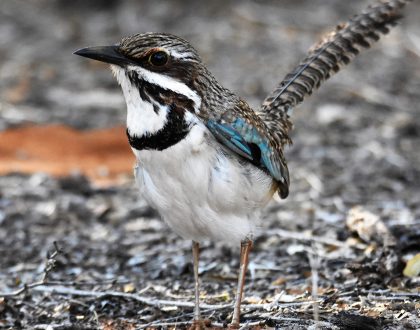
21/ Special interest – Birding tour in Madagascar
August 6, 2018
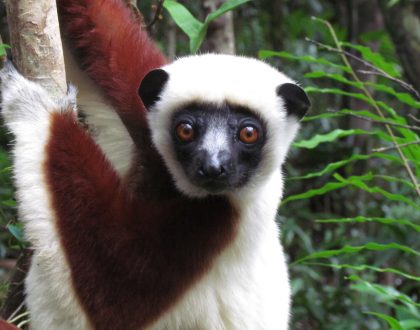
Madagascar Northern Untamed : 14 nights – 15 days
July 17, 2018
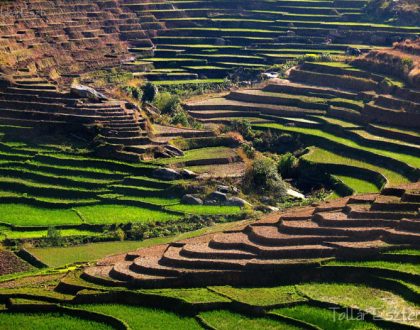
31/ Madagascar for landscape photographers
May 28, 2018

